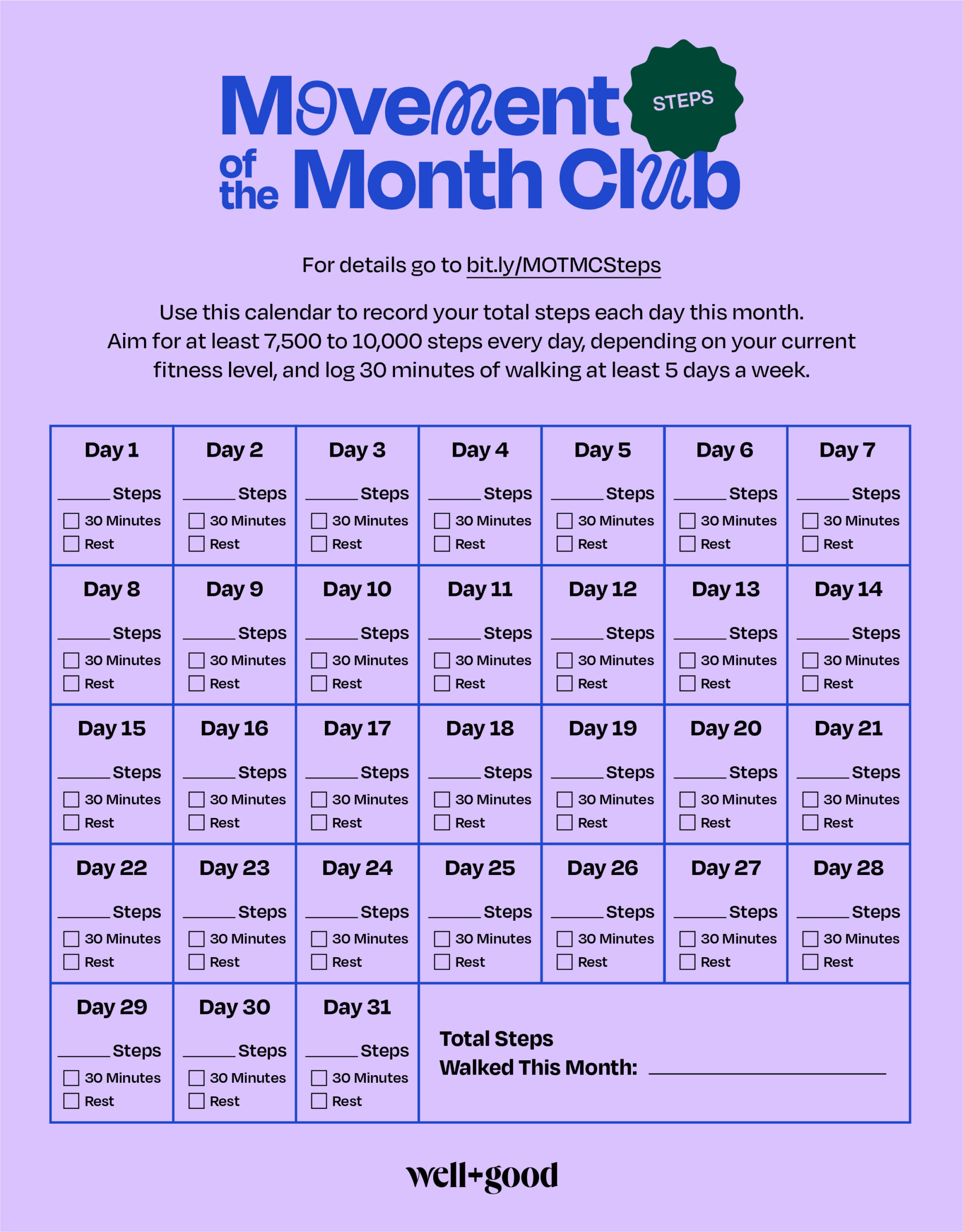If you’ve ever run a marathon (or even thought about running a marathon), you’ve heard the oft-repeated advice: Don’t go out too fast.
There’s a reason it gets said so often. It is both vitally important and incredibly tempting to ignore. Many new marathoners (and even experienced ones) make the mistake of trying to bank time at the beginning of the race, which just means they end up bonking by the end.
One almost-surefire way to avoid this is to run with a pacer—an experienced runner whose job it is to lead a group to a designated finish time at an even pace or effort.
Well+Good spoke to two pacers who’ve helped hundreds of runners meet their marathon and half-marathon goals. Whether you want to use an official pacer at your next race, or simply run even splits on your own, read on to get their advice on the best approaches.
The best ways to run with a pace group
Chat with your pacer
It may feel intimidating to strike up a conversation with a pacer. But Myles Lock, who has paced four New York City Marathons and many half marathons with New York Road Runners, promises that “we don’t bite.” In fact, Lock says that his biggest advice for runners is to talk to their pacer—whether asking them last-minute questions, or sharing race goals.
If you can, meet your pacer before the starting-line chaos; they’re sometimes available at the race expo. But asking questions in the corrals is totally acceptable, too, says Lock, which will likely also be when the pacer lays out their plan for the race (usually they’ll aim for an even effort, meaning you’ll go a bit slower on uphills and a bit faster on downhills).
However, Rashaad Forehand, a pacer for Rock ‘n’ Roll San Diego, warns against talking any more than necessary during the race so you don’t waste energy or dry out your mouth. (Don’t worry about asking your pacer questions, since they’ll be running significantly slower than their personal marathon pace.)
The more your pacer knows about you and your goals, the more they can help you, Lock says. “If we get to learn your name, we can check in on you and you can give a thumbs up or thumbs down,” he says. Befriending your pacer has other perks, too: “If you’re a runner who has achieved a new goal, I’ll be happy to give you the pacer stick flag as a memento,” he says. “Don’t hesitate to ask for the sign—as long as it’s not strapped to my back, it’s all yours.”
Don’t doubt your pacer’s abilities
At most races, pacers have to prove a consistent ability to finish the given race at significantly faster time than they’re pacing. (Forehand, for instance, is a 2:39 marathoner, and usually paces the 3:30 group.)
But Lock says that doesn’t keep runners from asking him mid-race what his marathon PR is—a question that can be annoying but that he understands. “They want to know that I can do the job. It helps ease their anxiety about whether this person is going to be able to perform,” he says. “It’s a comfort thing.”
He says runners also often point out to him when a mile was faster or slower than the designated pace, perhaps not understanding the concept of “even effort” rather than pace. “We’re like, yeah, we know,” says Lock, who usually paces with two GPS watches. While he’s happy to be a sounding board for a runner’s anxieties, he wishes more runners would “let us do the thinking for you,” he says. “We want you to go out there and have fun and not think about the pace. If you’re running with us, you’re not going to have to worry because I’ve got it.”
When in doubt, join the slower pace group
Running with a pacer won’t help you if the pace they’re running is too fast for you. Go into race day with a reasonable, smart goal based on your training and the course, and if that goal is between two pace groups, start out with the slower one.
Lock says that if you explain your situation to your pacer, they can send you out ahead of the group at a certain point in the race if you’re still feeling good. “Communicate with a pacer because they can calculate, if this person leaves now, what do they have to run to get the goal they’re trying to achieve?” he says. “We’re little computers in our brains—we’re trying to take the guesswork out.”
Don’t wear headphones
Good pacers will give instructions and tips throughout the race, so try to keep your ears free so you can hear them. Forehand often gives runners a heads up that he’ll be running the tangent when a turn is approaching (meaning taking the shortest possible route rather than following the curve of the street), for instance, and Lock talks his group through upcoming hills, instructs them to “grab and go” when approaching a water station, and gives form cues when he notices runners looking down, or tensing up.
“There are things that you’ll miss if you’re really into your Beyoncé moment,” says Lock, who is also a certified running coach. “And it also helps you be more aware of people around you and be able to communicate.”
Run where you’re most comfortable
Though ideally you want to be close enough to the pacer to hear them, you don’t need to be right in the thick of the pace group. In fact, Forehand says that if you’re not used to running in large, crowded groups of people, you may want to run just in front of or just behind the pace group. Pacers at most marathons plan to come in at least 30 seconds ahead of the designated finish time, so if you’re slightly behind them, you should still meet your goal (but confirm this with your pacer before the race just in case).
If you do end up running in close quarters, be careful to not clip others’ feet, and try to avoid weaving. “People waste too much energy trying to get around someone,” says Forehand. “Usually it’s not worth the mental or physical energy—it’s best to just wait for an opening and then move forward.”
How to be your own pacer
Some smaller races, and even some big ones, like the Boston Marathon, don’t use pacers. Even in races that use pace groups, you may not find one that suits your goal, or you may start with one but eventually find yourself running alone (ahem, the group isn’t going to wait for your bathroom break).
If you’re on your own, use these tips from the pacers to run an even race.
Drill in your pace
Any marathon training plan worth its salt should have you spending plenty of time running at your goal marathon pace so that you get used to what it feels like. Be sure to spend some time at that pace during race week in particular so you know it’s locked in. “Get that feeling of the pace embedded into your mind and your legs,” says Lock.
Use a watch to help
If you struggle to maintain a steady pace in training, most running watches allow you to program a pace range, and then will beep at you when you’ve gone outside that range. Forehand says that while this can be a useful training tool, he doesn’t recommend doing this during an actual race. (Getting a digital nudge that you’ve slowed down while you’re struggling up a hill might just make you angry.)
Wear a pace band
Pace bands show mile-by-mile elapsed time for a given goal pace, and can usually be found at most big race expos. (Some websites also make custom pace bands based on course elevation and race strategy.) This can be especially useful in races where your GPS watch may not be accurate for the entire course, like those in large cities. Just make sure you’re not spending too much time looking down at your wrist, says Lock.
Don’t try to bank time
If you find yourself pulling ahead of your goal pace early in the race, hold back, says Forehand, even if it feels easy to run faster. You can start pushing the pace later in the race, when you’ve covered enough ground already that you probably won’t crash and burn. Remember: For a marathon, think of your first 20 miles as just your warmup.
Flash News
Empowering you to live a fit and healthy life






